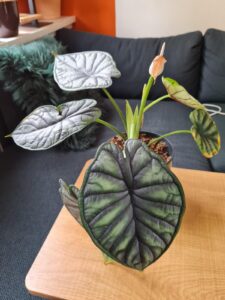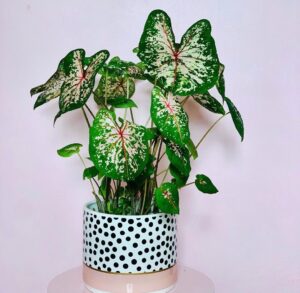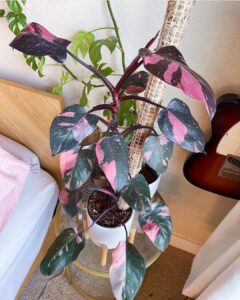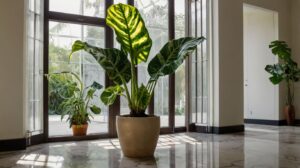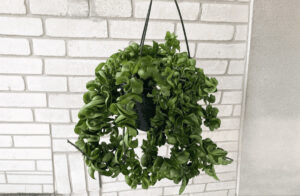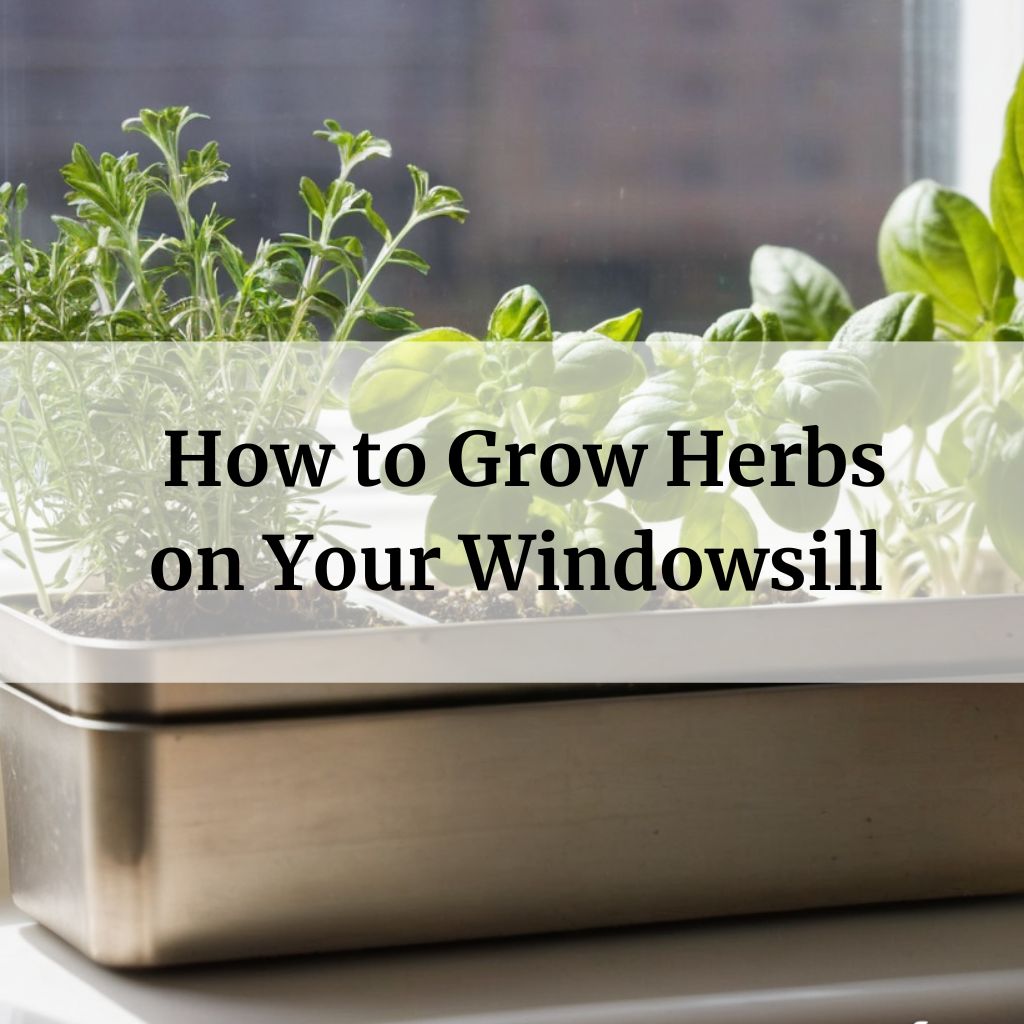
This step-by-step guide will provide you with tips on choosing the right herbs, selecting the right containers, and providing the right growing conditions for growing herbs on your windowsill. In 2024, growing your own herbs is more important than ever as climate change continues to impact commercial herb farming. Having a windowsill herb garden ensures you’ll always have a supply of fresh herbs for cooking and drinking teas or infusions.
In this article
Choosing The Right Spot
When it comes to growing plants in a windowsill herb garden, sunlight is a crucial factor to consider. Most plants require a minimum of 6 to 8 hours of sunlight each day to thrive and produce healthy foliage and flowers. In the winter at higher latitudes and during periods of cloudy weather, your herbs may not receive enough direct sun and may need supplemental lighting. Consider adding a grow light shelf above your windowsill to provide the additional sun your herbs need.
A south-facing window is still considered the ideal spot for a windowsill herb garden because it receives the most sunlight throughout the day. However, east or west-facing windows that receive morning or afternoon sun can also work well as long as the plants get 6-8 hours of direct sunlight. A south, east, or west exposure ensures the sun is hitting the plants at a strong angle for the most intense light exposure.
It’s important to note that the intensity of sunlight can vary depending on the time of year and location. In the summer, the sun is higher in the sky, providing more intense sunlight. In contrast, in the winter, the sun is lower in the sky, resulting in less intense sunlight. Therefore, it’s essential to monitor your plants’ sunlight exposure and adjust their location accordingly. Move plants to a south-facing window or use supplemental lighting in the winter if direct sun exposure is inadequate.
Signs that your indoor herb garden is not receiving enough light include:
- Poor growth or legginess
- Abnormally long stems between leaf sets
- Leaves that are pale or yellowish in color rather than deep green
- Failure to flower or bolt in appropriate season
If you see any of these signs with your indoor herbs, try moving them to a different, brighter location or using additional artificial lighting to give your plants what they need to thrive.
Choosing the right herbs
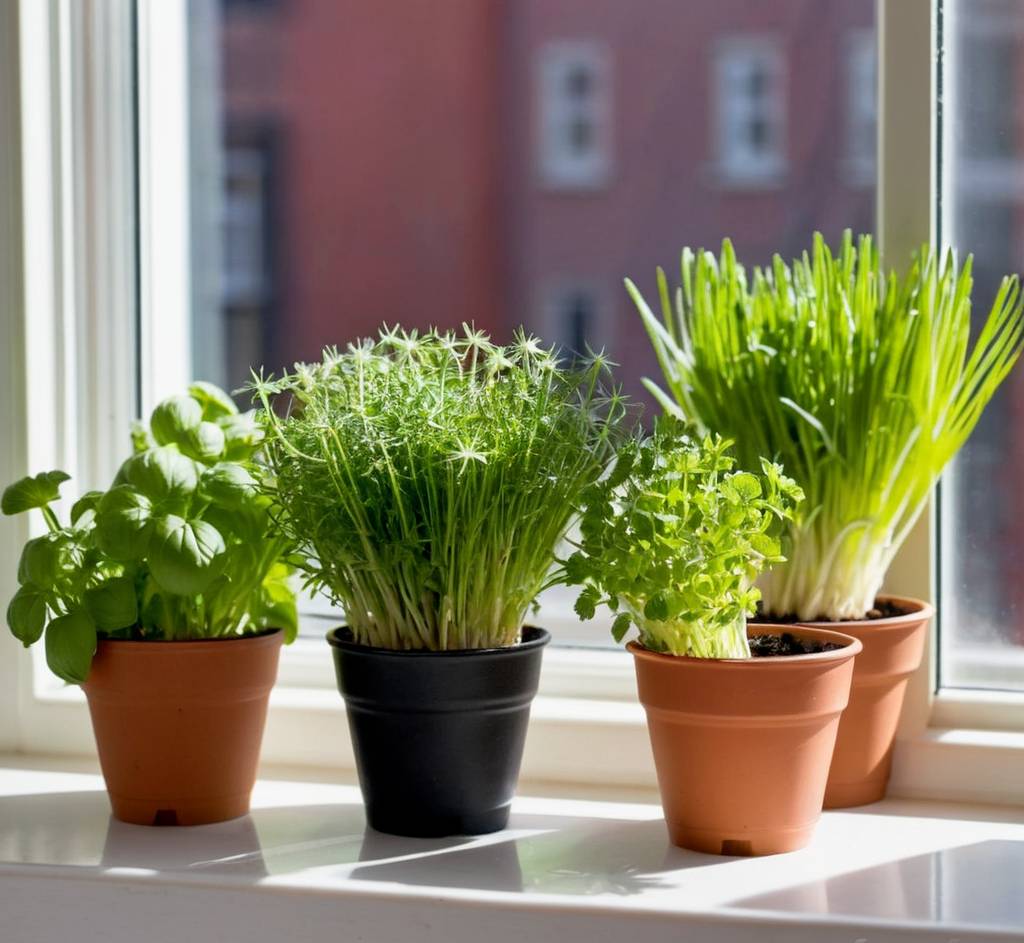
Growing herbs indoors is a great way to have fresh herbs at your fingertips all year round. While many herbs can be grown indoors, some are easier to grow than others. Here are some of the easiest herbs to grow indoors that require minimum maintenance:
- Basil: Basil is a popular herb that is easy to grow indoors year-round. It requires plenty of sunlight and well-draining soil. Genovese basil tends to be the most productive variety. Basil can be grown from seeds, seedlings, or cuttings taken in the summer, and it grows quickly, producing fragrant leaves perfect for pesto, salads, pasta dishes and more.
- Mint: Mint is another herb that thrives with minimum care indoors. It prefers partial shade and consistently moist soil, making it ideal for growing in a kitchen window. Peppermint and spearmint varieties are well-suited for indoor growing. Mint can be grown from seeds, seedlings or cuttings, and produces an abundance of fragrant leaves perfect for infusing into water, cocktails or baked goods.
- Chives: Chives are an especially hardy herb that easily overwinters indoors. They prefer bright, indirect light and average, well-draining potting soil. Chives can be grown from seeds, onion sets or divided clumps, and produce long, tender leaves ideal for seasoning potatoes, soups, salads and eggs.
Basil, mint and chives tend to be the most foolproof herbs for beginning indoor gardeners because they tolerate a wide range of conditions and remain productive with minimal maintenance. However, all herbs have their own requirements, so it’s important to provide the proper care.
READ MORE: Choosing the best kitchen herbs for your indoor garden.
Container size and companion planting
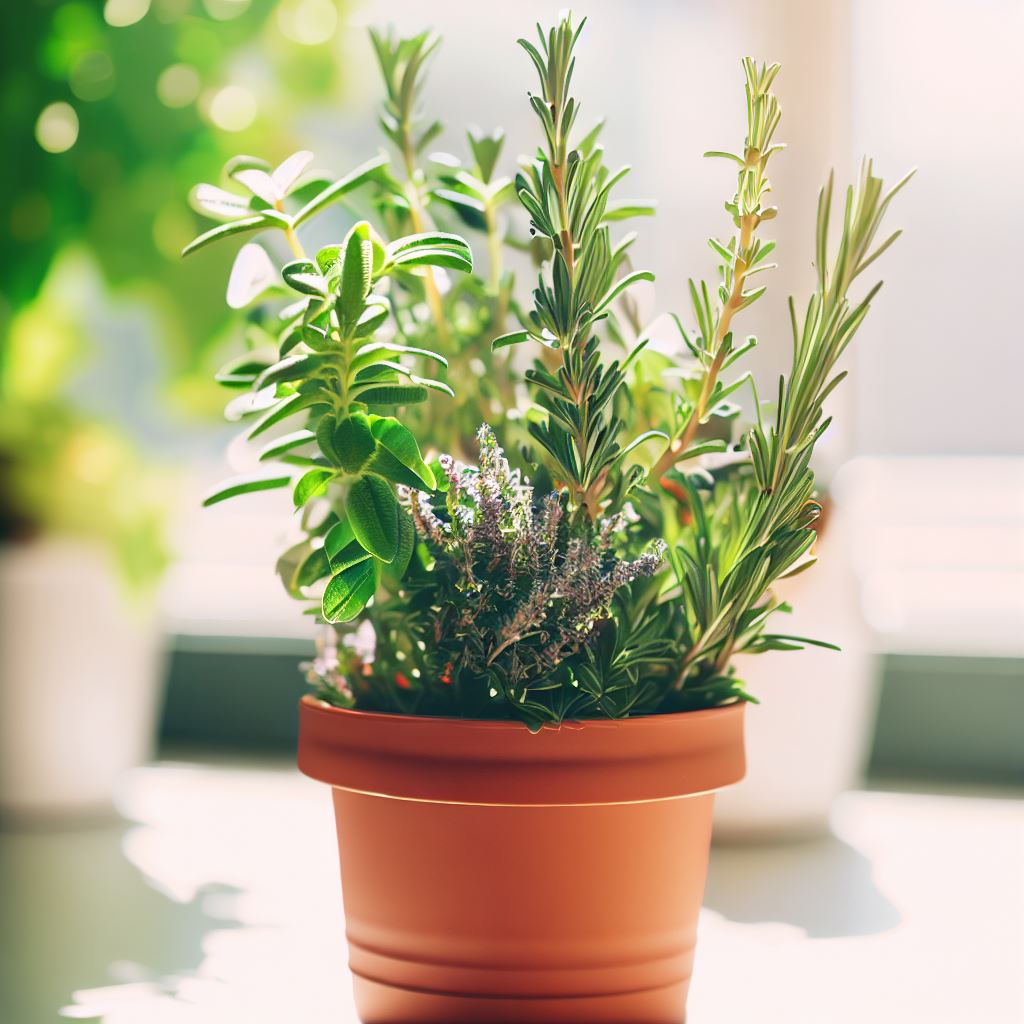
When it comes to choosing containers for your windowsill herb garden, individual pots are best, as they allow you to provide each plant with optimal conditions for growth. Clean terra cotta, plastic or glazed ceramic pots in 6-8 inch diameters work well for single herbs.
If you want to create a mixed windowsill herb garden, it’s important to select containers that are 10-12 inches in diameter, wide window boxes or multi-plant hanging baskets for more plants and visual appeal. Proper container size ensures adequate soil volume and room for plants to spread out their roots.
It’s also best to combine herbs that have the same light, moisture and fertility needs through companion planting. For example, rosemary, thyme, sage and oregano enjoy drier soil and prefer to be planted together. Parsley, cilantro, dill and fennel prefer cooler conditions and moisture and so pair well. Growing plants according to their companionship avoids problems like one herb outcompeting others due to differences in care requirements.
Watering (and avoiding overwatering)
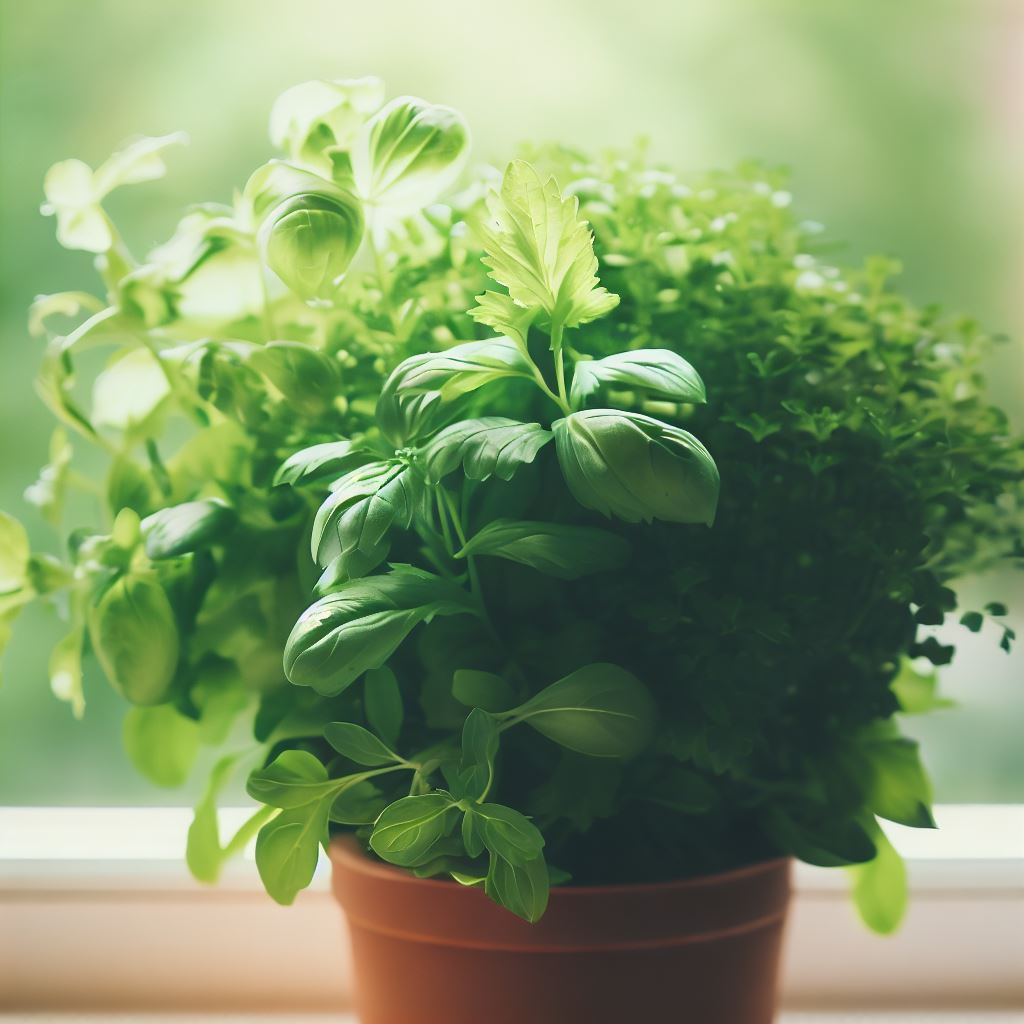
One of the most important factors to consider is providing your indoor herb garden with the proper watering and light conditions. Overwatering can cause root rot while underwatering will result in wilting. The best practice is allowing the top inch of soil to dry out between waterings.
It’s also important to water your herbs in the morning with tepid, room temperature water to avoid shocking their roots. Consider using a moisture meter or finger test to check soil moisture levels below the surface before watering.
South-facing windows provide optimal sunlight angles and duration. However, supplemental lighting may be needed in winter or for shade-tolerant herbs.
A simple grow light set up with LED or T5 fluorescent bulbs hung above plants can provide the 6-8 hours of daily light they require to remain productive throughout the year. Monitoring lighting quantities is especially crucial during winter months.
Regular Maintenance
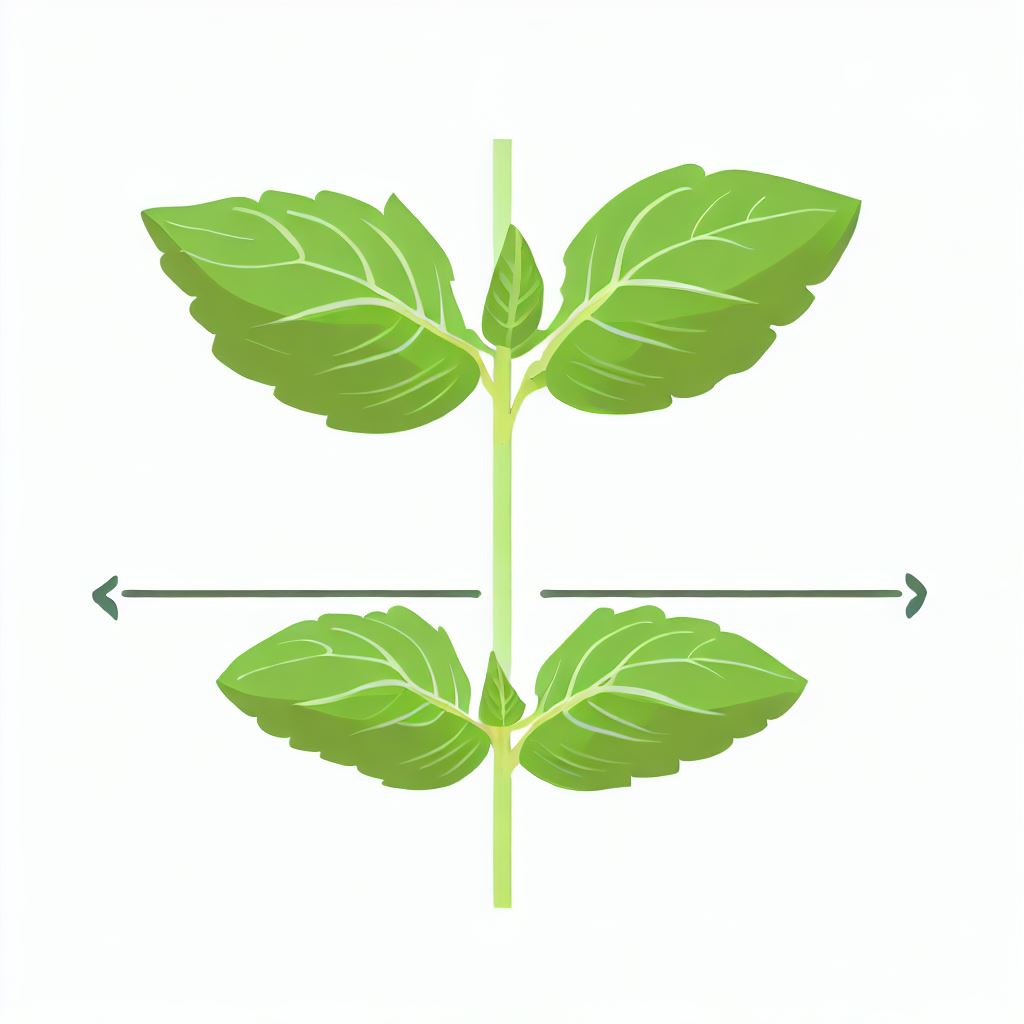
Growing herbs indoors requires some regular maintenance to maintain plant health and maximize yields.
Pinching or cutting herbs back every 2-3 weeks trains plants to bush out and produce more finely-textured leaves. This mild pruning also prevents leggy growth and stimulates additional leaf production.
When trimming, avoid removing more than 1/3 of the plant‘s total growth at once. Snip stems back to outer leaf nodes or above a set of healthy leaves using clean pruners or garden shears. Always remove older, woody stems that no longer produce.
Regular trimming is key to prevent flowering, which reduces a plant’s ability to focus on vegetative growth.
Keeping your indoor herb garden’s environment optimized through attentive care means a continuing harvest of premium quality leaves for culinary enjoyment throughout the year.
With the right window location, routine maintenance habits and adjustments for seasonal light changes, your windowsill herb planters can thrive indoors.
Happy gardening!


